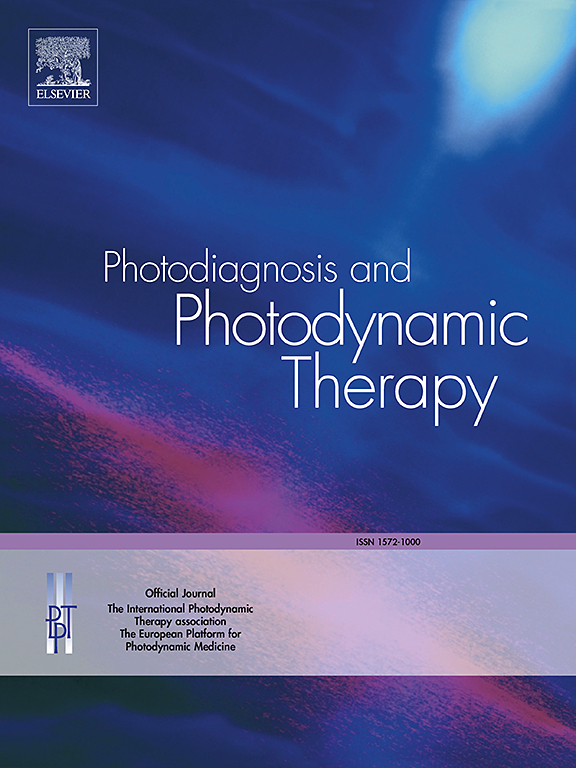Quantitative analysis of retinal and choroidal microvascular changes after endonasal endoscopic pituitary adenoma resection: An OCTA study
IF 3.1
3区 医学
Q2 ONCOLOGY
引用次数: 0
Abstract
Background
This study used swept-source optical coherence tomography angiography (SS-OCTA) to compare retinal and choroidal vascular parameter changes before and after transsphenoidal surgery in pituitary adenoma (PA) patients, and to compare these changes with healthy controls, in order to evaluate its predictive value for visual recovery and determine the optimal timing for surgery.
Methods
23 PA patients (46 eyes) and 25 healthy volunteers (50 eyes) were included. The PA group was followed up at 1 week and 1 month postoperatively. Retinal and choroidal parameters in the macula(M) area and optic nerve head(ONH) area were assessed, including thickness(T), volume(V), vascular flow density (VFD), foveal avascular zone (FAZ), choroidal vascular volume (CVV) and choroidal vascular index (CVI).
Results
Comparison of retinal and choroidal morphology and blood flow between the case group and the control group showed significant increases in the deep capillary plexus (DCP) thickness and volume in the macula. The superficial capillary plexus (SCP) thickness, volume, large and medium choroidal vessels (LMCV) CVI (p = 0.032) in the optic disc area, as well as all indicators of the FAZ were significantly reduced. Compared to preoperative values, a week postoperatively, SCP-T and SCP-V in the optic disc area, and DCP FAZ perimeter all significantly decreased, while SCP VFD in the foveal avascular zone within 300 μm (FAZ300) significantly increased (p = 0.047). Compared to preoperative values, 1 month postoperatively, LMCV choroidal matrix density (CSI), CVI (p = 0.022) and DCP-T in the optic nerve area significantly decreased, while SCP-FAZ300 significantly increased (p = 0.0282). Tumor size was the most important factor affecting retinal and choroidal parameters.
Conclusion
The SCP-T, CSI, CVI, and other parameters in PA patients were significantly lower compared to healthy controls. These parameters further decreased after decompression surgery, likely due to secondary changes from optic nerve atrophy caused by tumor compression. The continulous improvement of SCP foveal avascular zone within 300 μm(FAZ300) may be related to the recovery of blood flow after the decompression, as the macular cells remain intact. These parameters—SCP-FAZ300, LMCV-CVI/CSI, and SCP-ONH T/V—collectively quantify postoperative visual acuity(VA)and visual field(VF) outcomes and guide surgical timing selection.These findings suggest that PA patients require earlier screening and treatment, and OCTA can serve as an optimal non-invasive evaluation tool.
鼻内窥镜垂体腺瘤切除术后视网膜和脉络膜微血管变化的定量分析:一项OCTA研究。
背景:本研究采用扫描源光学相干断层扫描血管造影(SS-OCTA)比较垂体腺瘤(PA)患者经蝶窦手术前后视网膜和脉络膜血管参数的变化,并与健康对照进行比较,以评估其对视力恢复的预测价值,并确定最佳手术时机。方法:PA患者23例(46眼),健康志愿者25例(50眼)。PA组分别于术后1周和1个月随访。评估黄斑(M)区和视神经头(ONH)区视网膜和脉络膜参数,包括厚度(T)、体积(V)、血管流密度(VFD)、中央凹无血管区(FAZ)、脉络膜血管体积(CVV)和脉络膜血管指数(CVI)。结果:病例组与对照组的视网膜、脉络膜形态及血流比较显示黄斑深毛细血管丛(DCP)厚度和体积明显增加。视盘区浅表毛细血管丛(SCP)厚度、体积、大、中脉络膜血管(LMCV) CVI (p = 0.032)及FAZ各项指标均显著降低。与术前比较,术后1周视盘区SCP- t、SCP- v、DCP FAZ周长均显著降低,300 μm内中央凹无血管区SCP- VFD (FAZ300)显著升高(p = 0.047)。与术前比较,术后1个月LMCV脉络膜基质密度(CSI)、CVI (p = 0.022)、视神经区DCP-T显著降低,SCP-FAZ300显著升高(p = 0.0282)。肿瘤大小是影响视网膜和脉络膜参数的最重要因素。结论:PA患者的SCP-T、CSI、CVI等指标均明显低于健康对照组。这些参数在减压手术后进一步下降,可能是由于肿瘤压迫引起视神经萎缩的继发性改变。SCP中央凹300 μm内无血管区(FAZ300)的持续改善可能与减压后血流恢复有关,黄斑细胞保持完整。这些参数——scp - faz300、LMCV-CVI/CSI和SCP-ONH T/ v——共同量化了术后视力(VA)和视野(VF)结果,并指导手术时机的选择。这些发现表明,PA患者需要早期筛查和治疗,OCTA可以作为最佳的无创评估工具。
本文章由计算机程序翻译,如有差异,请以英文原文为准。
求助全文
约1分钟内获得全文
求助全文
来源期刊

Photodiagnosis and Photodynamic Therapy
ONCOLOGY-
CiteScore
5.80
自引率
24.20%
发文量
509
审稿时长
50 days
期刊介绍:
Photodiagnosis and Photodynamic Therapy is an international journal for the dissemination of scientific knowledge and clinical developments of Photodiagnosis and Photodynamic Therapy in all medical specialties. The journal publishes original articles, review articles, case presentations, "how-to-do-it" articles, Letters to the Editor, short communications and relevant images with short descriptions. All submitted material is subject to a strict peer-review process.
 求助内容:
求助内容: 应助结果提醒方式:
应助结果提醒方式:


